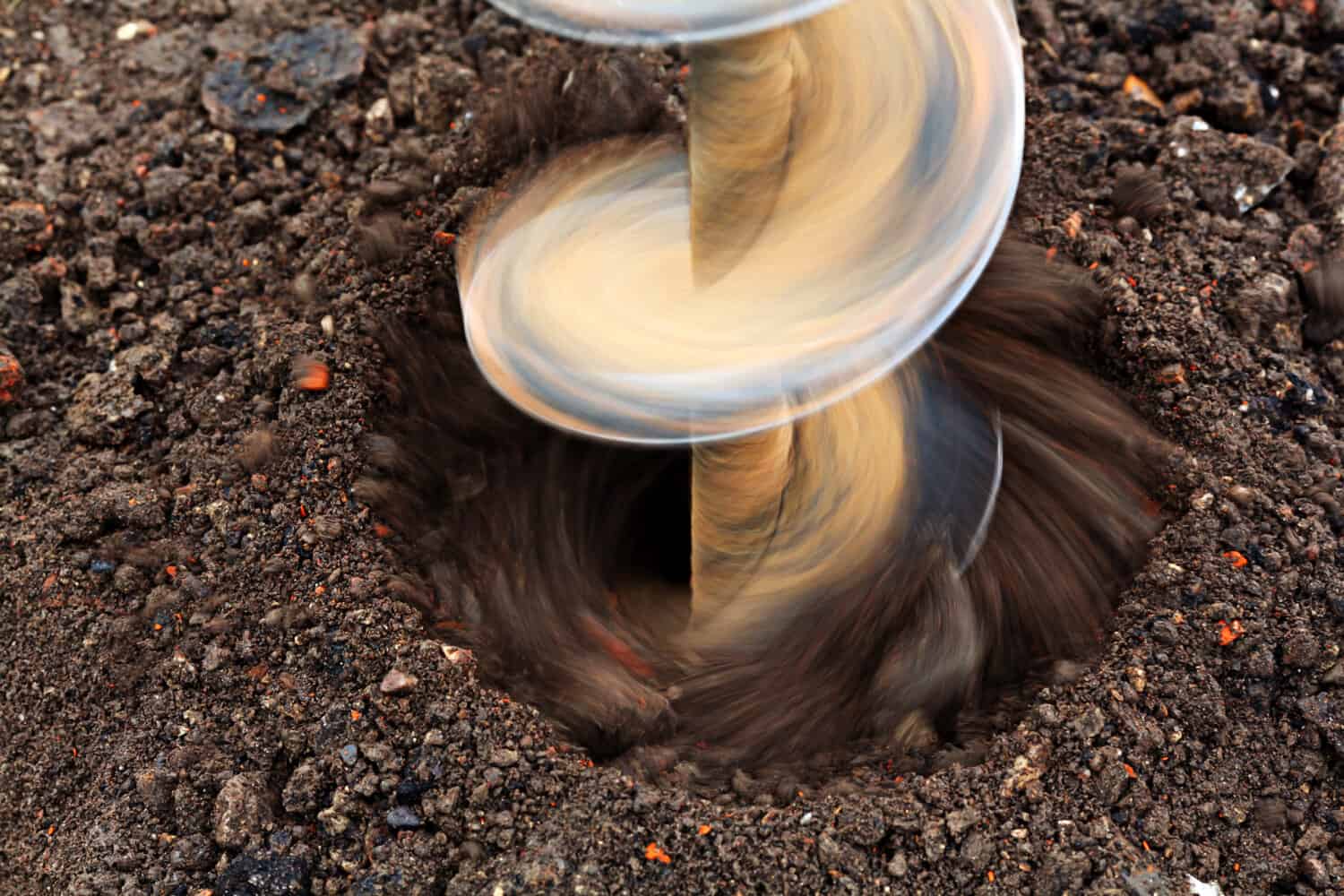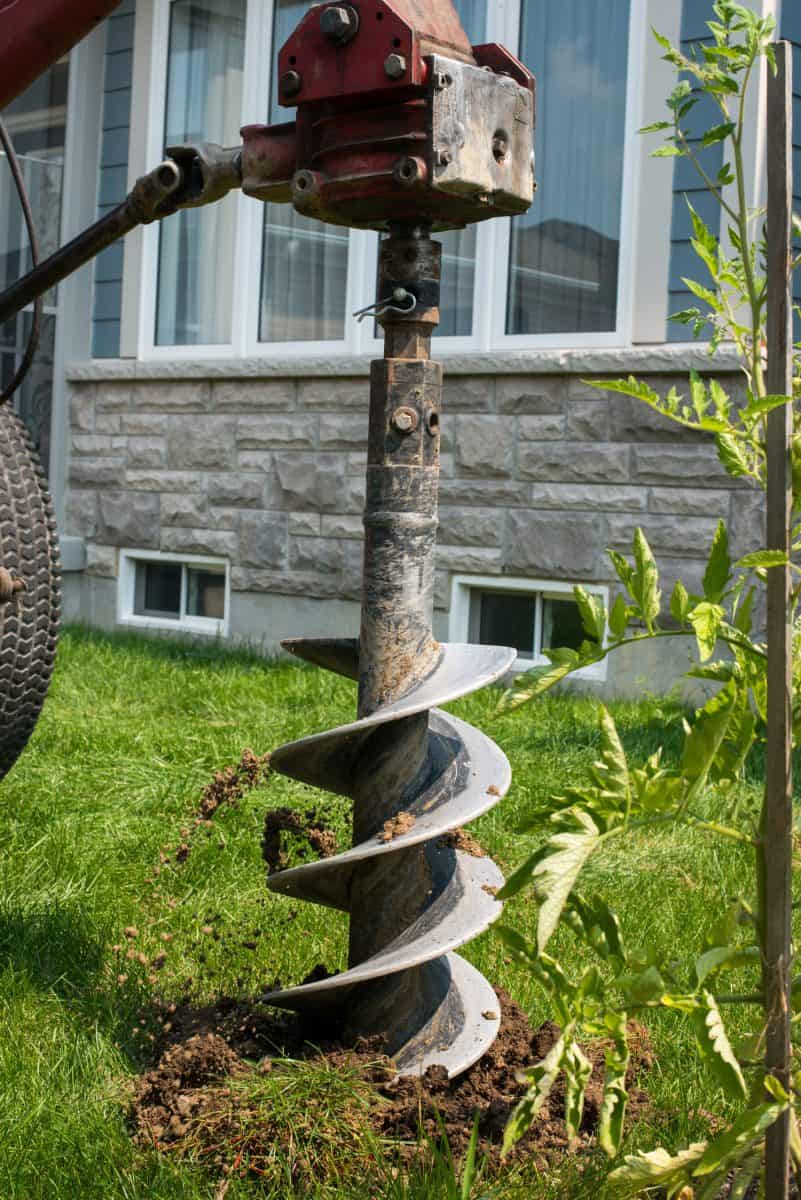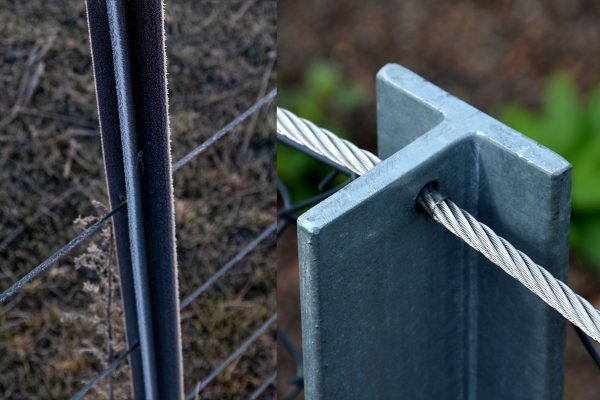If you're getting ready to install fencing, a clothesline, signpost, or piping you probably don't want to spend all your time digging! So, how long does it take to make a hole using a post hole digger? We have researched some ways how to make excavating a hole with a post hole digger simpler and faster.
The duration of the work mainly depends on the quality of your tool, the status of the ground, and the area you are digging. If there are no problems with all of these factors, you can finish excavating a hole in a matter of minutes. However, if there are any obstructions, it could take you longer.
When using a post hole digger, you have to consider several factors that can affect the overall work process, and how to overcome them. But do not fret too much! We are here to help you make the work simpler and easier.

Why Use a Post Hole Digger?
Have you ever wondered why use a post hole digger when you can simply utilize a shovel or spade? Before we delve deeper into the topic, it is important to understand this tool's function for you to further appreciate its significance.
Basically, using this equipment is less time-consuming than using a spade because it is specifically designed for digging narrow holes for erecting posts or planting seeds. Since a shovel requires you to dig at a different angle, there is no consistency with the width. It is also much harder and it can delay the work.
Unlike with a post hole digger, you can just simply pierce the ground at a straight angle, making it easier to loosen the soil and scoop the dirt out of the hole. This adds to its efficiency and quality work.
Augers will also make the job easier because you would not have to do any manual labor. However, there are certain factors that can affect the undertaking.
Post Hole Diggers

Post hole diggers have two basic types - post hole diggers and augers. The former has shovel-like blades while the latter looks like a large corkscrew that drills through the ground.

Specific tasks require different tools or implements to make the process easier. It would help if you identify what is needed to accomplish both.
For Planting
If your intention is to plant shrubs or flowers, you can use a garden auger. It is a smaller and handheld tool that is specifically designed to drill different diameters of holes for planting bulbs or trees.
If you already have a drill, try the auger planter attachment. This should speed up your hole digging and get those flowers blooming no time!
See this auger drill bit on Amazon.
Traditional post hole diggers can also be used as long as the length of the blades is not too long.
For Setting Up Posts
Traditional, double pivot, or offset post hole diggers are the best kinds to use because they can go four feet deep into the ground. A double-pivot can reach a depth of five feet.
See this post hole digger on Amazon.
If you do not want manual labor, you can utilize a gas powered hand auger because it can be used on various DIY projects such as setting up fences or post signs. It can drill up to three feet deep.
For Fishing
If you want to bore a hole on ice, you can use an ice auger. It is built for drilling and accomplishing this task. The tool can be gas-powered because it proves to be more adept in drilling through layers of ice.
See this ice auger drill attachment on Amazon.
Factors Affecting Time Efficiency

1. Quality of the Tool
One of the main reasons why the work usually takes longer is because of the quality of the post hole digger. Wear and tear or frequent usage will cause dents to the edges of the blades. The job is twice as hard because the tool can no longer pierce the ground the way it should.
Can You Sharpen a Post Hole Digger?
To fix this problem, you can sharpen the blades using a file. Remember to disassemble the tool, clean the shovel-like bases, and grind them to remove any dents or crisps before filing.
You can also purchase a new blade, but it depends on the kind of post hole digger you have. Some of these tools' plates are designed for a specific classification of this material.
Check out Seymour post hole blade on Amazon.
2. The Digger Material
The material of which the digger is made can also be the cause because post hole diggers made entirely of steel are heavier than those manufactured with wood. The weight of the tool would also determine how fast you can finish the job - the heavier, the longer.
Can You Modify A Post Hole Digger?
If you own a post hole digger completely built of steel, you can replace the shafts with wood. Simply pattern the lumber into the tube of the blades.
3. Obstructions in the Area
If roots and rocks are present in the area, it will be difficult and time-consuming work because you would have to remove these obstructions before continuing to dig. Large tree roots are harder to deal with.
Remember to avoid using augers when dealing in areas with large tree roots.
Can A Post Hold Digger Cut Roots?
If the hole contains plant roots that are less than three inches thick, you can use a post hole digger to cut and dig through them. Dig all sides of the hole until the roots are severed then scoop both the soil and roots, and continue until you have reached the required depth.
Smaller rocks are easier to deal with because you can just simply pick them up and throw them away. Also, there is a specific post hole digger that can cut through stones.
A scissor-action or split-handled digger has blades that are connected via a steel tube, making it durable enough to handle rocks. A universal or Boston digger has sharper and pointy blades that can actually cut the stones.
4. Quality Of The Soil
If the soil is too hard, it is more challenging to pierce the ground with a post hole digger. Simply water the area, and let the liquid sit for a while until the location is moist enough. This will soften the landscape, making it easier to dig through the surface.
How To Dig Through Soil with Large Tree Roots?

Cut The Roots
In this an ordeal, to cut the roots, you will have to use an ax - specifically a mattock because it has a wider head which makes it easier for you to accomplish the task. Avoid using an auger or a post hole digger, especially for roots that are three inches thick.
See this mattock on Amazon.
Dig Another Hole
If the roots are too difficult to sever, you can just simply dig another hole. When setting up fence posts, the usual paneling size is six feet. With this being said, excavate a hole a foot away from the last one because the roots in this area may be less thick or lesser.
Rent a Grinder
If worst comes to worst, you can rent a grinder. This will easily cut through any size and thickness of tree roots. This may not be a practical choice if you can still utilize an ax.
In Conclusion

Now that you are aware of the various reasons that may impede your work, we hope this article proved to be helpful in terms of making the project simpler and faster.








